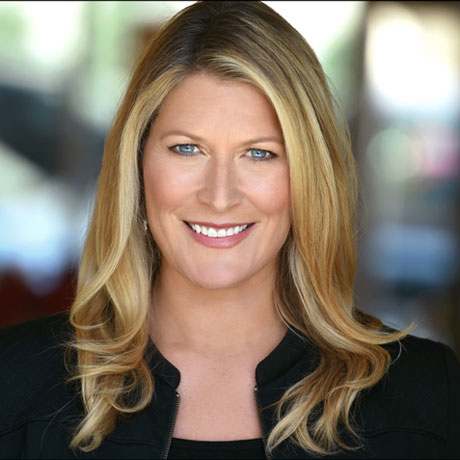Jan 08, 2020
There are more ways than ever before to distribute content thanks to technological innovation. Ahead of this year’s CES, several industry insiders explain what that means for the future of premium content.
CES, which runs from Tuesday, Jan. 7 to Friday, Jan. 10 in Las Vegas, traditionally focuses on the latest hardware. Now it’s also a place where the media industry and tech world collide, showcasing how, for example, you will soon be able to catch the latest episode of RuPaul’s Drag Race from the comfort of your self-driving car or experience the Grammy’s from the perspective of the attendees via a virtual reality headset.
As a result of the innovation, companies—including ViacomCBS—are increasingly focused on new and creative ways to engage consumers across multiple platforms and devices. In other words, they are focusing on distributing content to accommodate consumer preference, making it possible to find content wherever, whenever, and however they want.
“Viewers are watching more video than ever and I think there’s a huge opportunity for further growth in streaming services ... I don’t think there will be a single ‘winner’ that emerges, but rather a series of products to meet the needs of different audiences and at different price points—including free,” says John Curbishley, EVP, distribution strategy, operations, and new business, ViacomCBS. “Mobile is going to be an increasingly important platform for video consumption—for both long-form and short-form.”
Curbishley is one of many in the media industry that will be speaking at this year’s conference. He’ll be on a panel titled “Leading the Evolution of Media and Entertainment,” which will center on how all the products and hardware on the CES floor will influence the entertainment space.
We asked several experts about their thoughts on the future of TV and their expectations for CES. Here’s what they had to say:


"“Mobile is going to be an increasingly important platform for video consumption.”"
Where the future of TV is heading: Viewers are watching more video than ever and I do think there’s a huge opportunity for further growth in streaming services. This will come both from subscription products, where viewers tell us they are willing to increase their spend, and also in the ad-supported space. I don’t think there will be a single “winner” that emerges, but rather a series of products to meet the needs of different audiences and at different price points—including free.
What everyone will be talking about at CES this year: I saw a lot of developments in the connected car space at CES last year, and expect that to continue and even accelerate in 2020. As vehicles become more autonomous this will free up time for greater media consumer consumption which is a huge opportunity for our industry. And in fact, you’ll be hearing some news from ViacomCBS in that space this year.
What he thinks will be the next iteration of content consumption: I think mobile is going to be an increasingly important platform for video consumption—for both long-form and short-form. There will be some interesting opportunities for programmers to work with mobile carriers to offer bundled video services. An example: in the U.S. this year will be T-Mobile’s upcoming new video initiative, for which ViacomCBS is a launch partner.
How distribution evolves over the next year… and the next five: Clearly the cable and satellite companies will continue to be large and important distributors for Pay TV, but I also expect digital distributors like Amazon and Apple to be key partners for streaming services. In fact, the majority of subscribers to so-called “direct to consumer” streaming services are actually through third-party distributors. In the next five years, we will see more competitors emerging with their own channel stores, e.g. mobile carriers and hardware manufacturers.
Panel: “Leading the Evolution of Media and Entertainment” on Wednesday, Jan. 8.


"The fundamental demand for video isn’t going away – it’s the opposite."
The future of TV is… : Starting with the macros, we are clearly seeing a tectonic shift from a broadcast (one-to-many) to a unicast paradigm (one-to-one) in media. This means media, including video, will need to continue to hyper-target and super-serve individuals where they are on any device. We know that for WarnerMedia to earn its share of these unicast streams, as a company, our challenge is to get better and better at providing consumers with entertainment experiences that are both satisfying and frictionless wherever they are—and we’ve taken the first steps to do that with HBO Max.
On declining cable subscriptions: As SVOD services and other forms of entertainment (e.g. gaming, live-streaming, audio) compete for consumer attention it will continue to put pressure on traditional forms of entertainment, including the Pay TV bundle. That’s natural. What’s interesting is that this period of fragmented dis-aggregation in the marketplace is creating confusing and disjointed experiences requiring consumers to cobble together a mix of products to get the entertainment experience they want. And that’s not sustainable. Meanwhile, the fundamental demand for video isn’t going away – it’s the opposite.
So we look at this and say, while one metric may be declining (traditional Pay TV subs), there will be a huge opportunity for growth for those who can creatively re-aggregate, re-bundle and create a better, more seamless consumer experiences around video.
What trends will be popular at CES: An obvious one is 5G, which will be an enormous component in the evolution of the media landscape in terms of the kinds of experiences it can unlock. What many miss is that the 5G network is about much more than faster upload and download speeds – it is a step-function change in network performance. This unlocks a host of entertainment experiences in the future, not to mention self-driving cars, augmented reality, telehealth care, and so much more.


"“Our kids don’t call it TV anymore, it’s just content.”"
Where TV is heading: The future of “TV” is already in the rear-view mirror. Our kids don’t call it TV anymore, it’s just content that they watch when and where they desire at any given moment. This trend will continue as new technologies make possible a wide variety of viewing experiences that cater to increasingly mobile lifestyles.
The trends that will be on the rise at CES: Platforms and devices reacting to the exploding streaming wars will be interesting, plus the usual promise of the future when it comes to AR/VR. I am most interested in seeing what the evolution of 5G has in store, not just for content, but for life in general.
On the rise of streaming: Some of the newer entrants will fare better than others, depending on differentiation in terms of the type of content offered and the price point of the service. At some point the industry will encounter consumer fatigue in terms of finding content, particularly if franchises migrate around from platform to platform.
The next iteration content consumption: Short-form has a purpose for filling in the gaps during life’s interstitial moments, however, I believe that long-form episodes will still be the preferred format. I do like the trend of shorter seasons that seems to be taking hold in the streaming space, e.g. six episodes versus 13 and more than one season a year.
Panel: “Future of TV: From Primetime to Multi-Platform Packages” on Monday, Jan. 6.


"There will be a fairly robust traditional cable TV model moving forward.”"
The evolution of distribution: It’s no secret that the traditional Pay TV business is in decline, and I would expect to see that trend continue in the next year and beyond. However, this trend in no way indicates consumers have less demand for quality video content. Quite the opposite. How consumers choose to watch their content will continue to fragment, in part due to the proliferation of new streaming services in the market … Ultimately it’s all about having the best brands, featuring the best content, which is what ViacomCBS will continue to bring to market in the next year and beyond.
On the rise of cord-cutting: I believe that cable TV subscriptions will continue to decrease in the next five years, although the rate of that decline is to be determined. We need to keep in mind that even with cord-cutting there are more than 85M households today that subscribe to a “cable” package through cable, satellite, telco, or internet distributors. Exclusively windowed premium content (live and on-demand) remains the linchpin of the cable “bundle” and as long as the various media/network groups remain disciplined in their approach to the old and new worlds, I believe there will be a fairly robust traditional cable TV model moving forward.
What trends will be popping up at CES: With the promise of 5G a focus of CES in recent years, I’m interested to see some of the more practical applications of this new era of connectivity, especially in how it benefits the consumer. From a mobile perspective, I’m looking forward to seeing more concrete steps forward with 5G, specifically, more 5G capable devices announced and new and exciting entertainment use cases to make this technology tangible for the consumer. We know that in the next 2-5 years car makers are planning ways to give passengers and drivers time back in their connected vehicles. Entertainment companies will play an important role in this, supplying content to capture idle time, whether it’s entertaining kids in the back seats or entertaining drivers of self-driving cars.
Panel: “Leaders in Fan-First Engagement: Riding the Direct-to-Consumer Wave” on Wednesday, Jan. 8.


"“We are in a 'golden age' of quality content production.”"
Where we’re headed: While traditional linear broadcast television is still the most heavily watched programming, streaming is definitely changing viewing habits and how consumers access television. Live and linear broadcasting as a medium will continue to dominate in the future with live sports, live events and breaking news–with local news especially dominating the medium. In a hybrid over-the-air and over-the-top environment, live and linear programming can actually be combined with streamed content to create a very rich personalized viewing experience. That’s where we’re heading.
On the future of streaming: I believe that streaming is obviously here to stay and that we are in a “golden age” of quality content production. Access to a wide array of programming couldn’t be easier. So the question is whether the number of services, the cost of production, and consumer willingness to pay are all sustainable. I just recently canceled a subscription that my kids originally signed up for, because nobody at my house is watching that streaming service anymore.
Trends to watch: A big trend will be the move by broadcasters to enable what we call “hybrid television” – an effort that starts in 2020 with the introduction of NEXTGEN TV. This new service is an all Internet Protocol-based over-the-air broadcast transmission system that enables the television set to combine over-the-air and over-the-top programming and provide an enhanced video and audio experience. We’re very excited to see the three most dominant TV manufacturers – LG, Samsung, and Sony – announce plans at CES to introduce 20 NEXTGEN TV sets in 2020.
How content consumption will evolve: I don’t think there is a battle between “long form” versus “short form.” It’s the storytelling that really matters. And I think that the screen size, time of day, and demographics of the viewer determines a lot about what gets watched. Video will continue to dominate as medium and total viewing consumption will continue to increase. That much is certain.
Panel: “What NextGen TV Means for Tech" on Jan. 9, 2020 at 9:00am


"“Content that can meaningfully connect people is what’s next on the horizon.”"
Trends that will change TV: Three factors are driving television today: consumers, content, and ease of access. Consumers will continue to be the bellwether of the industry, and their demand for ease of access to content will illuminate opportunities for innovation. Similar to what the television industry experienced over the past few decades, I think there will continue to be a proliferation of choices, followed by a natural culling and finally, a settling. Again, it will be the consumers that determine which content and platforms take the lead.
What he’s excited to see on the show floor: Personally, I’m excited to see innovation and technology outside of the media industry. In general, we can expect to see a more sophisticated development of the “connected” trend and the IoT. Creating utility around simplicity and ease is something I think we’ll see a lot more of, and that includes: implementation of AI, voice activation, and simple solutions to home/whole life integration and further connectedness is a trend to watch.
On the “streaming wars”: As a consumer, streaming is exciting—it all starts and ends with the content. As an industry insider, I can see how streaming is always morphing, ever-evolving. It’s my preference not to use the term “wars” because it denotes winners and losers, and I think the crowded landscape proves that there is room for a swath of players. Those that provide the most exceptional consumer experience will ride highest on the streaming wave, but currently, we’re all in the water together. Eventually, bundling will be necessary to create fluidity and a more seamless transition between platforms and applications–consumers just want to get to the content.
The future of content creation and consumption: Content that can meaningfully connect people is what’s next on the horizon. For a while, social media created the proverbial water cooler, but consumers today crave a long-form connection, too. Where will it come from? Innovative publishers or technologies that can help viewers achieve a shared content experience will be the ones to watch.
Panel: “The Future of Entertainment” on Tuesday, January 7 at 1:00pm


"The future of TV is more connected, more involved, and more customized."
What the future of TV looks like: Consumers today don’t just want to passively watch TV. They want TVs that can fully integrate into their lives—just like their phones, tablets, and wearable devices do. That’s why Samsung is redefining the role of the TV in the home to deliver experiences that are personalized to your life. That includes new digital services like Samsung Health, a health and wellness solution that helps users actively engage with their TV to pursue their fitness goals, as well as our 2020 lineup of lifestyle TVs. By changing the physical design of the TV, we’re helping consumers to express their individuality and better integrate TVs into their space.
The future of TV is more connected, more involved, and more customized.
Biggest takeaway to expect from CES: It’s all about 5G. Since it enables us to transfer more data on more devices more quickly, we’ll soon be able to do everything from 8K streaming to graphically rich cloud gaming – it really expands the experiences you can have on your TV.
Additionally, artificial intelligence has created all kinds of features that help consumers get the most out of their TVs. From intelligent content curation to AI upscaling (which helps close the gap between TV and content resolution …it even makes old home movies look good!), it has really leveled up the capabilities of today’s TVs.
Also, we’re expecting a lot of demand for super-large TV screen sizes, higher resolutions, and new form factors. One thing we know is that in the US, ultra-large screens are the fastest growing segment in the market, with 75 percent growth year-over-year. And larger screen sizes demand higher resolutions. That’s why we’re building out the 8K ecosystem with our QLED 8K TVs in 2020.
Another encouraging development is that consumers are interested in designs that go beyond the traditional viewing experience. They’re looking for options like The Frame, which can blend with or enhance the décor in your home by displaying auto-curated artwork that fits your tastes.
How the rise in streaming content will affect the tech world: As streaming becomes a bigger part of the home entertainment experience, consumers are looking for more content choices and higher-quality streaming capabilities. We are rising to that occasion by partnering with leading brands like Apple, Disney+, and Netflix to deliver exclusive content and create more impactful experiences for our consumers.
We’re also developing new features that are helping consumers to get the most out of the age of streaming. For example, our flagship Q950 features AI ScaleNet, which uses next-generation compression to cut down the amount of bandwidth needed to stream content.
What to expect from consumers: Today, consumers are using more screens, in more ways, than ever before. They’re shopping from, working from home, and even exercising from home. As digital lives continue to evolve, the TV screen is going to evolve with them. It will become more connected with their other devices, and more flexible to different kinds of home environments. It’s a vision we call “Screens Everywhere,” and we’re living up to that vision by delivering a more vivid and connected at-home viewing experience.
With AI-enabled features, 8K technology, and dynamic lifestyle TVs, we’re creating new screens that give consumers the seamless digital lifestyle they need to pursue their passions.


"Advertising dollars will continue to move from cable to OTT. "
Where TV is heading: The TV space will continue to become more and more fragmented as more SVOD and AVOD services launch. Finding ways to attract broad audiences will be harder than ever and live TV will continue to be the most reliable way to breakthrough. Advertising dollars will continue to move from cable to OTT. Marketers will understand the importance and value of their streaming audience and will shift spend to follow the audience.
The trends happening at CES:
- 5G and its impact on the sports experience
- 4K and 8K television sets
- Health tech and how it's changing
- The health and fitness getting more personal and wearable
The rise of streaming affecting the development of hardware/product: Data and discovery will be even more important than they already are now. Products and services that can help marketers understand their streaming audience better and help users discover more content will be in high-demand.
The next iteration of content consumption is...: VR moving from a personal to a shared experience.
Panel: “Future of TV: From Primetime to Multi-Platform Packages” on Monday, Jan. 6.
With additional reporting by Kelby Clark.
Responses have been edited and condensed for clarity.

